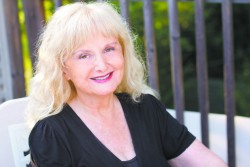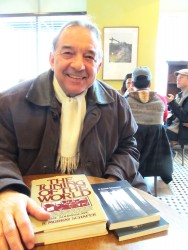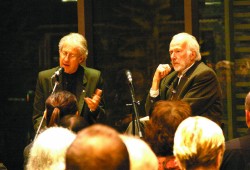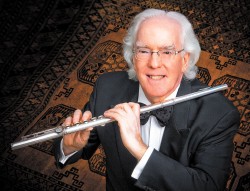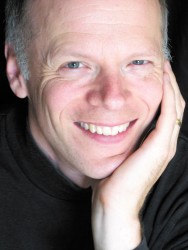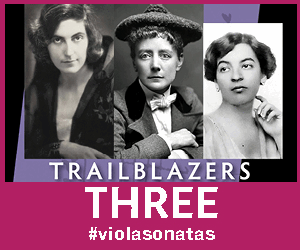Of all the concerts I didn’t get out to last month the one I regret most missing was Continuum Contemporary Music’s October 22 program at the Music Gallery titled “Finding Voice.”
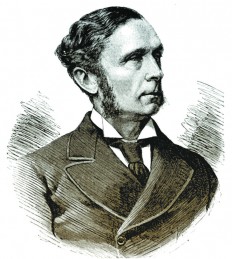 “Communication, as well as the historical lens, is at the core of a concert that presents two linked theatrical works by Dutch composer Martijn Voorvelt” read the always entertaining Continuum blurb. “[It is] based on the tangled up story of Sir Morell MacKenzie, inventor of the tracheotomy, and his treatment of the mute and dying German Emperor Friedrich III.”
“Communication, as well as the historical lens, is at the core of a concert that presents two linked theatrical works by Dutch composer Martijn Voorvelt” read the always entertaining Continuum blurb. “[It is] based on the tangled up story of Sir Morell MacKenzie, inventor of the tracheotomy, and his treatment of the mute and dying German Emperor Friedrich III.”
Because Voorvelt is a self-taught composer, drawing at will on literature and theatre, I was looking forward to an evening of music that dipsy-doodles across the line between genres, using sound in ways that are more instinctual than intellectual. It was a quality that smacked me right between the eyes last year during Vingko Globokar’s visit last season, and I was looking forward to exploring it further: the connections between the innate musicality of voice and the inherent storytelling capacity of music.
Training the ear to listen to new music by invoking the nuances of spoken work — cadence, intonation, pitch, pace — seemed like a fine topic for a rainy day, and may well still be. But I will have to proceed without my prime example, and I’m sorry for it.
That being said, there’s no shortage of material this month for an exploration of the topic. For one thing, I could revisit our cover story’s Maniac Star/Royal Conservatory November 25 co-production of Brian Current’s Airline Icarus. (Current’s final comment on the challenge of educating the new music audience’s ear is certainly a propos). But let’s look for some other examples.
Nine days earlier, on November 16 and 17, in the selfsame venue, for example, the Royal Conservatory Opera School presents a double bill of Ned Rorem’s Three Sisters Who Are Not Sisters andJoseph Vézina’s Le Lauréat. In Rorem’s work, in particular, drama and music seem always shyly (or should that be slyly?) fascinated bedfellows, without ever quite figuring out what the attraction is. Three Sisters takes for its libretto a Gertrude Stein play of the same nameand it makes for an interesting match. Bernard Holland, in The New York Times, Oct 1, 1994, writes about the Stein/Rorem work, and makes the following interesting observation: “Stein’s little game of mock murder makes sense of a sort, but making sense is not its business. It is the arrangement of her simple declarative sentences that pleases. Mr. Rorem’s terse music and its skillful, imitative ensembles ... successfully explain a literary art in which form is everything and matter matters little. Every musical gesture Ned Rorem has ever made has something of the human voice behind it.”
“Musical gesture with the human voice behind it” is a good description of the thing I am trying to describe, and it can be found across the musical spectrum. An example: a November 8 noonhour recital at University of Guelph College of Arts titled “Problems with Love.” It features a consummate musical raconteur, mezzo-soprano Patricia Green, wrapping her innate storytelling skills around “songs by Canadian composers, touching on poignant and funny sides of love.” And another example: a Sunday November 18 7:30pm presentation at the Arts and Letters Club by the Toronto Chapter of the American Harp Society titled“A Score to Settle,” written by K. Gonzalez-Risso, and billed as “a musical monologue for solo harp” featuring harpist and comic actress Rita Costanzi.
In entirely different ways, these performances, informed by principles as different as comedy and cabaret, offer opportunities for the willing listener to explore how an understanding of the rituals and cadences of storytelling can inform musical choice, no matter how abstract, by composer and listener alike.
Choral common ground: If music theatre is the most dramatic example of the interplay between different modes of listening, then choral music is the most pervasive. Indeed choirs, more than almost any other presenters, are at the forefront of commissioning new work, of mixing repertoire across generations in the same programs, and putting experiencing a work of music ahead of judging it as good or bad. With an estimated 20,000 individuals participating in choirs in The WholeNote catchment area, this is no small fact, especially given that choristers, more so than concert band members, for example, tend also to be avid concert-goers. Not a bad way of educating people to broaden their understanding of what makes music music!
Nowhere will you see this more clearly illustrated this month than in the November 11 Soundstreams Canada presentation of the Latvian Radio Choir at Koerner Hall, in a program ranging from Rachmaninoff to Cage, to young Canadian composer Nic Gotham and more.
Or take as another example the November 17 Grand Philharmonic Chamber Singers’ “Made in Canada” concert with music ranging from a new commission by Patrick Murray to works by Healey Willan and Harry Somers. And check out the November 10 Cantabile Chamber Singers concert titled “Lux” and described as an “a capella concert on the themes of light, love and night featuring works by L. Silberberg, C. Livingston and B. J. Kim.”
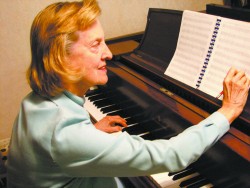 Or, finally, consider the November 3 University of Toronto Faculty of Music concert titled “Choirs in Concert: When Music Sounds: Celebrating the 80th birthday of Ruth Watson Henderson.”
Or, finally, consider the November 3 University of Toronto Faculty of Music concert titled “Choirs in Concert: When Music Sounds: Celebrating the 80th birthday of Ruth Watson Henderson.”
Henderson, one of Canada’s pre-eminent choral composers, talks about the links between text and music in a recent interview (on the Choral Canada website), with Dean Jobin-Bevans, president of Choirs Ontario.
“It is all about taking a text that I find inspiring and thinking about how it can be presented in a way that can express some important feelings and ideas to a large number of listeners” she says. “The most important thing for me when I am writing is the text; if I get a good text, then all of my ideas come from the text. I am not very good at putting things into words, I am much better at hearing things musically, and so when I cannot express myself when speaking with words, I find that I can express myself much better through music; by putting ideas down on paper and writing choral works.”
Follow the Bob! Regular readers of this column will know that I often pick a particular venue and catalogue what’s happening there as a way of providing a cross-section of what is happpening. It’s sometimes equally instructive, though, to follow an individual musician through a month’s worth of perambulation from one venue to another.
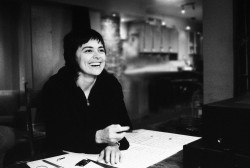 Take New Music Concerts’ Robert Aitken for example. The evening of November 11 will find him at the Music Gallery, albeit in the capacity of genial host rather than performer, for a New Music Concerts presentation of Ensemble contemporain de Montréal, Véronique Lacroix, conductor, in a program titled GENERATION 2012: ECM+.
Take New Music Concerts’ Robert Aitken for example. The evening of November 11 will find him at the Music Gallery, albeit in the capacity of genial host rather than performer, for a New Music Concerts presentation of Ensemble contemporain de Montréal, Véronique Lacroix, conductor, in a program titled GENERATION 2012: ECM+.
Four days earlier, he features as flutist, along with musical chameleon, accordionist Joseph Macerollo, in a Canadian Music Centre/New Music Concerts event titled “Secret of the Seven Stars.” It’s a CD launch, featuring works by Hope Lee and David Eagle, and providing an early opportunity to check out the new and improved Chalmers House performing space, one which one hopes will join the array of fine little performance venues for cutting edge music.
And, going from little to large, Sunday November 18 Aitken will appear as flutist in Esprit Orchestra’s second Koerner Hall Concert of the season, titled “Exquisite Vibrations,” in a work titled Concerto for Flute and Orchestra by French composer Marc-André Dalbavie.
The universities: mind you, you can’t go wrong by familiarizing yourself with the key venues for new music either. Starting with the universities, I count no fewer than ten concerts at the University of Toronto this month that could be of interest to new music followers, most of them at Walter Hall: November 4 there is a concert, “In Memory of Gustav,” dedicated to the works and legacy of Gustav Ciamaga, composer, educator and electronic music pioneer; composer/teacher Norbert Palej shows up as a composer on November 5 (in another concert featuring accordionist Macerollo), and then on November 21 as conductor of the U of T Faculty of Music’s gamUT Ensemble ... and the list goes on, for U of T as for its Philosopher’s Walk neighbour to the north, the Royal Conservatory. Same goes for York and others.
Small venues: as for the smaller venues, check out the Music Gallery (November 10, 15, 17; December 1 and 7); Gallery 345 (November 4, 8, 10, 16, 18, 22, 23 and 27); the Tranzac (November 7, 8 and 9) for the 416 Toronto Creative Improvisers Festival; and the Wychwood Barns (November 10, 24 and December 1) for New Adventures in Sound Art (NAISA)’s 11th Annual SOUNDplay Series.
And make a special point of checking out the newest intimate space on the map, the Array Space at 155 Walnut St. On November 19 at 7pm, it’s a concert titled “Passport Duo,” featuring works by Hatzis, Wilson, Forsythe and O’Connor. And on November 26 it’s the 14th in a series of evenings of improvised music, with Array director Rick Sacks and a roster of always interesting guests.
Subversion: I started by talking about how spoken language potentially provides different, sometimes less daunting and even enriching access points to new music. It’s not the only tool in the shed, though. There’s also the thoroughly mixed program (such as that promised by Scaramella on December 1, in the Victoria College Chapel, which offers “animal-themed music, from baroque to the 21st century”). Or perhaps even more to the point, consider a November 9 offering from a collective, group of twenty-seven, called “The Subversion Project” which on this occasion, at Grace Church on-the-Hill, offers works by Beethoven, Prokofiev, Zorn and Buhr in a deliberate effort to enable listeners to hear the familiar anew, and to modulate the strange through the familiar.
Sounds like a fine idea, don’t you think?
David Perlman has been writing this column for the past season (and a bit) and is willing to entertain the notion that it’s someone else’s turn. He can be reached at publisher@thewholenote.com.
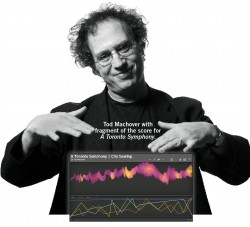 This year’s New Creations Festival presented by the Toronto Symphony Orchestra from March 2 to 9 will be an opportunity to catch a glimpse of what may be in store for the music lovers of 2050. When the TSO invited American composer and technology wizard Tod Machover to both curate the 2013 festival and compose a new work for it, Machover began dreaming big.
This year’s New Creations Festival presented by the Toronto Symphony Orchestra from March 2 to 9 will be an opportunity to catch a glimpse of what may be in store for the music lovers of 2050. When the TSO invited American composer and technology wizard Tod Machover to both curate the 2013 festival and compose a new work for it, Machover began dreaming big.

